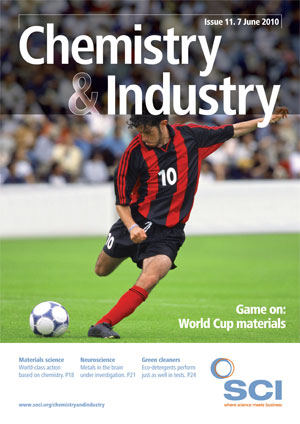The world’s first ‘synthetic cell’ – with the catchy moniker of JCVI SYN 1.0 – has been created in the lab using off the shelf chemicals and a hollowed out bacterium. The researchers hope that this work will result in designer organisms that suck large quantities of carbon dioxide out of the atmosphere and turn them into fuel, produce vaccines quickly and cheaply or synthesise chemical feedstocks. But critics have claimed that scientists are ‘playing god’ and are on a slippery slope, with the risks of such engineered organisms to people and the environment still an unknown.
The creation of the novel organism by Craig Venter’s team was a followup of earlier work where they trimmed down the genome of one bacterium and inserted it into the empty shell of another species of bacteria (C&I 2007, 13). This time, his group created a synthetic genome of Mycoplasma mycoides by joining up more than 150 pieces of chemically manufactured DNA 6000 base pairs long. The pieces of DNA were glued together with the help of yeast cells to produce a finished plasmid ready for transplant. The 1.08Mbp synthetic genome was then inserted into Mycoplasma capricolum bacteria that had been denuded of their nuclei.
This was when the problems began for Venter’s team as they discovered that they could not ‘boot up’ the synthetic bacterium. Investigation of this problem led them to conclude that there was a problem with the DNA – the yeast had not methylated it. Methylation is a strategy employed by bacteria to protect their DNA from being sliced up by protective enzymes. By methylating the DNA and inhibiting the defensive enzymes researchers were able to overcome this problem, but were still unable to produce functioning synthetic bacteria. Further investigation uncovered a single base pair error in the essential gene dnaA, a protein responsible for unwinding DNA during replication, had crept in. Once this was corrected the cell started up and began to metabolise and replicate in a manner indistinguishable from ordinary M mycoides (Science doi: 10.1126/science.1190719). Since the synthetic cell was created it has gone through more than a billion self- £200m of efficiencies savings and the extra 20,000 science, technology, engineering and maths students promised by the previous government will now be halved. There will be an extra £150m for 50,000 new apprentices specialising in employment in SMEs and another £50m to invest in further education colleges that are in greatest need. An emergency budget to address the country’s financial replication steps.
Venter’s team left their mark on the synthetic cell in a more esoteric manner too, with each member of the team encoding their name in the bacterium’s genome. This is more than simply a case of vanity publishing as the watermark enabled the researchers to identify whether the bacteria they grew up had a synthetic genome or were the result of contamination. They also included quotes from James Joyce, Richard Feynman and Robert Oppenheimer.
George Church, professor of genetics at Harvard University, says that the ‘grand challenge’ remains understanding how the parts of the cell interact to aid DNA in its task (Nature doi: 10.1038/465422a). ‘What we need now are ways to construct and test billions of genome combinations using protein and RNA biosensors.’ This technology will lead to new pharmaceuticals, fuels, chiral chemicals and novel materials, he adds.
‘This is the first self-replicating species that we’ve had on the planet whose parent is a computer,’ says Venter. ‘It’s also the first species to have its own web site encoded in its genetic code.’ This work also helps to answer the question of whether a bacteria’s genome contains everything it needs to produce a fully functional cell, he says, or if there are components in the cytoplasm necessary for a viable cell.
Mark Bünger, research director at analysts Lux Research, says that the applications of this technology are ‘only limited by our imagination’. Presently, he says, there appears to be little advantage using a synthetic cell over conventional genetic engineering of bacteria. However, in certain research areas, such as molecular biology, it could become a very useful tool as it is possible to know the exact genetic makeup of the cell before you start an experiment.
Bünger expects the cost of chemically synthesising long strands of DNA to fall rapidly and, consequently, the cost of developing synthetic cells. Venter’s group spent $40m developing JCVI SYN 1.0 and it currently costs as much as $1/base pair to produce synthetic DNA strands. ‘This is one of the few areas of molecular biology that does follow a Moore’s law type curve,’ Bünger says. ‘We’ll be down to pennies in the next few years.’ Moore’s law describes a long-term trend in computing that processors’ speed doubles every two years.
But not everyone was happy. Several genetic and environmental activist groups worried about the potential harm such synthetic life could cause if it escaped from the lab. One organisation, the Canadian ETC Group, went as far as to call for a moratorium on synthetic biology, describing the work as opening ‘Pandora’s box’ with unknowable consequences. Venter’s group countered these claims, saying that they had consulted on the ethics of their work at each stage.





